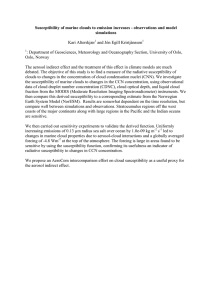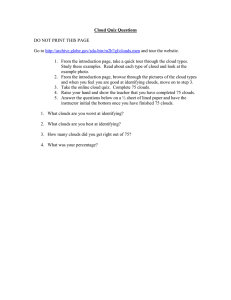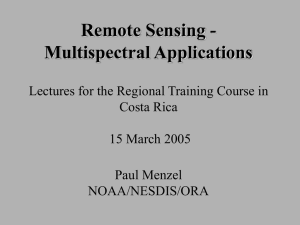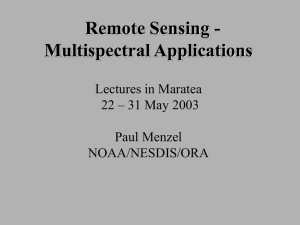Sensitivity to deliberate injections of sea salt into
advertisement
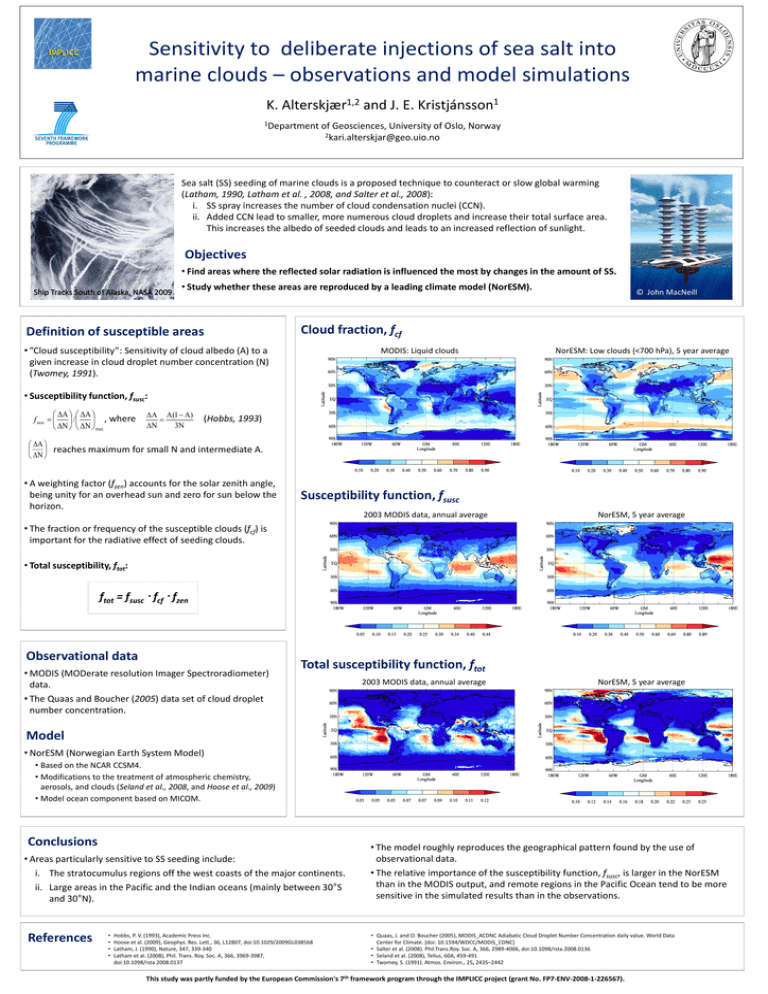
Sensitivity to deliberate injections of sea salt into marine clouds – observations and model simulations K. Alterskjær1,2 1Department and J. E. 1 Kristjánsson of Geosciences, University of Oslo, Norway 2kari.alterskjar@geo.uio.no Sea salt (SS) seeding of marine clouds is a proposed technique to counteract or slow global warming (Latham, 1990, Latham et al. , 2008, and Salter et al., 2008): i. SS spray increases the number of cloud condensation nuclei (CCN). ii. Added CCN lead to smaller, more numerous cloud droplets and increase their total surface area. This increases the albedo of seeded clouds and leads to an increased reflection of sunlight. Objectives • Find areas where the reflected solar radiation is influenced the most by changes in the amount of SS. Ship Tracks South of Alaska, NASA 2009 • Study whether these areas are reproduced by a leading climate model (NorESM). Definition of susceptible areas © John MacNeill Cloud fraction, fcf • ”Cloud susceptibility”: Sensitivity of cloud albedo (A) to a given increase in cloud droplet number concentration (N) (Twomey, 1991). MODIS: Liquid clouds NorESM: Low clouds (<700 hPa), 5 year average • Susceptibility function, fsusc: f susc / , where max (1 ) 3 (Hobbs, 1993) reaches maximum for small N and intermediate A. • A weighting factor (fzen) accounts for the solar zenith angle, being unity for an overhead sun and zero for sun below the horizon. Susceptibility function, fsusc 2003 MODIS data, annual average NorESM, 5 year average • The fraction or frequency of the susceptible clouds (fcf) is important for the radiative effect of seeding clouds. • Total susceptibility, ftot: ftot = fsusc · fcf · fzen Observational data • MODIS (MODerate resolution Imager Spectroradiometer) data. • The Quaas and Boucher (2005) data set of cloud droplet number concentration. Total susceptibility function, ftot 2003 MODIS data, annual average NorESM, 5 year average Model • NorESM (Norwegian Earth System Model) • Based on the NCAR CCSM4. • Modifications to the treatment of atmospheric chemistry, aerosols, and clouds (Seland et al., 2008, and Hoose et al., 2009) • Model ocean component based on MICOM. Conclusions • Areas particularly sensitive to SS seeding include: i. The stratocumulus regions off the west coasts of the major continents. ii. Large areas in the Pacific and the Indian oceans (mainly between 30°S and 30°N). References • • • • Hobbs, P. V. (1993), Academic Press Inc. Hoose et al. (2009), Geophys. Res. Lett., 36, L12807, doi:10.1029/2009GL038568 Latham, J. (1990), Nature, 347, 339-340 Latham et al. (2008), Phil. Trans. Roy. Soc. A, 366, 3969-3987, doi:10.1098/rsta.2008.0137 • The model roughly reproduces the geographical pattern found by the use of observational data. • The relative importance of the susceptibility function, fsusc, is larger in the NorESM than in the MODIS output, and remote regions in the Pacific Ocean tend to be more sensitive in the simulated results than in the observations. • Quaas, J. and O. Boucher (2005), MODIS_ACDNC Adiabatic Cloud Droplet Number Concentration daily value. World Data Center for Climate. [doi: 10.1594/WDCC/MODIS_CDNC] • Salter et al. (2008). Phil.Trans.Roy. Soc. A, 366, 2989-4006, doi:10.1098/rsta.2008.0136 • Seland et al. (2008), Tellus, 60A, 459-491 • Twomey, S. (1991). Atmos. Environ., 25, 2435–2442 This study was partly funded by the European Commission's 7th framework program through the IMPLICC project (grant No. FP7-ENV-2008-1-226567).



